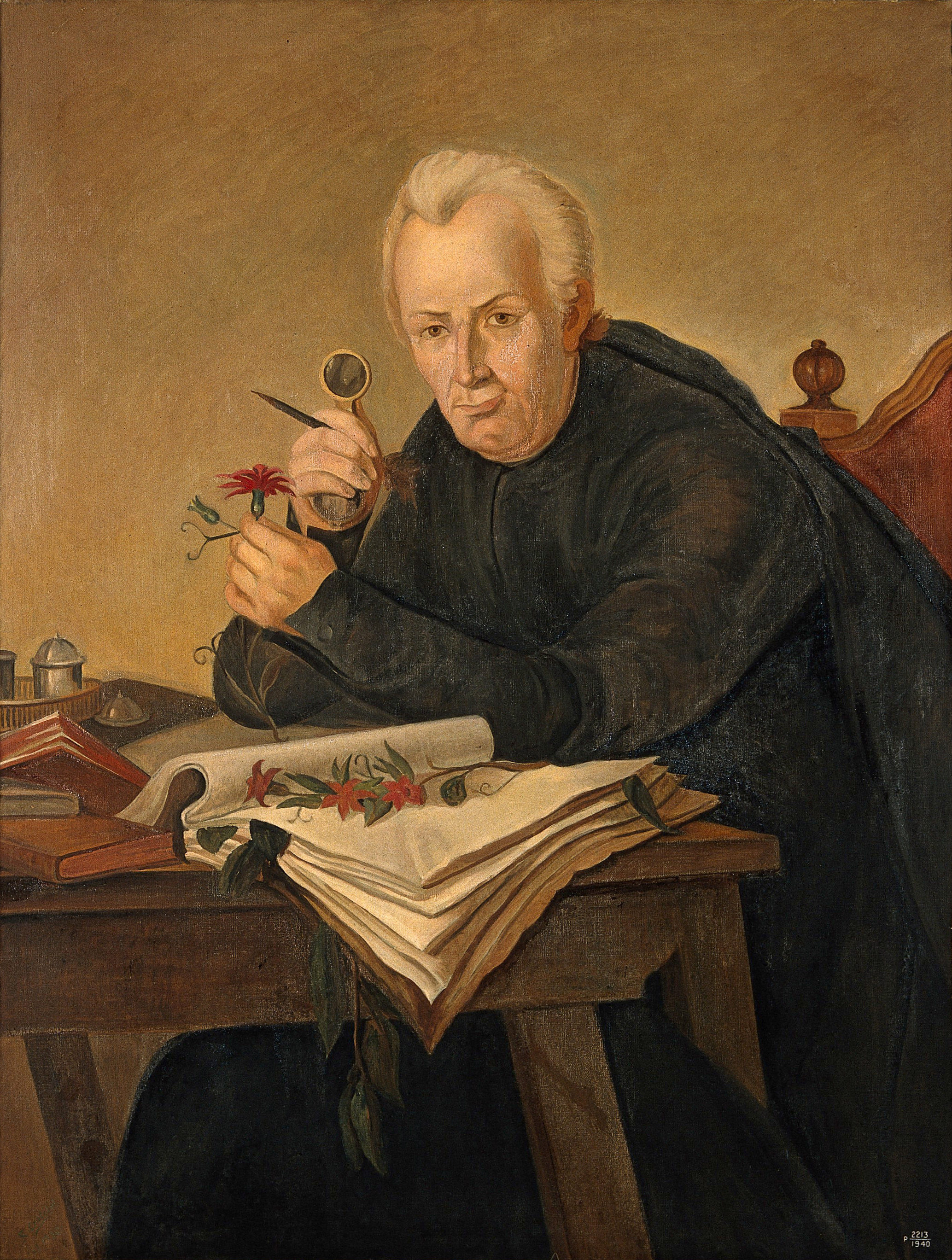Beginning in 1763, Mutis proposed to the king that he sponsor an expedition to study the flora and fauna of the region. He had to wait 20 years for the authorization, but in 1783 the king authorized his expedition (one of three royal botanical expeditions to the New World at about that time). In the interim, Mutis concentrated on commercial and and mineralogical projects, not neglecting medicine. He also studied the social and economic conditions of the viceroyalty, and continued to expand his collection of flora and fauna. On December 19, 1772 he was ordained a priest. He was in regular correspondence with scientists in Spain and elsewhere in Europe, particularly Carolus Linnaeus.
Mutis led the Royal Botanical Expedition, established in 1783, for 25 years. It explored some 8,000 km2 in a range of climates, using the Río Magdalena for access to the interior. He developed a meticulous methodology that included the harvesting of the samples in the field together with detailed descriptions, including data on the surroundings of each species and its utility. Hundreds of plants were discovered and described. More than 8,000 plates, plus maps, correspondence, notes and manuscripts were sent to Spain. His museum consisted of 24,000 dried plants, 5,000 drawings of plants by his pupils, and a collection of woods, shells, resins, minerals, and skins. These treasures arrived safely at Madrid in 105 boxes, and the plants, manuscripts, and drawings were sent to the botanical gardens, where they were relegated to a tool-house.
However much of the work was wasted because the results remained unedited and unanalyzed. Also, the collation between the notes and the plates was lost during the transfer to Spain. His work on the species and varieties of Chinchona had lasting influence.
He determined the longitude of Bogotá by the observation of an eclipse of a satellite of Jupiter and was a major influence on the construction of the National Astronomical Observatory.
In March 1762, at the inauguration of the chair of mathematics at the Colegio del Rosario, he expounded the principles of the Copernican system and of the experimental method of science, leading to a confrontation with the church. In 1774 he had to defend the teaching of the principles of Copernicus, as well as natural philosophy and modern, Newtonian physics and mathematics, before the Inquisition.
In 1784, he was elected a foreign member of the Royal Swedish Academy of Sciences.
Alexander von Humboldt visited Mutis in 1801, during his expedition to America. Humboldt stayed with Mutis for two months, and greatly admired his botanical collection.
Mutis died in Bogotá on September 11, 1808 at 76 years of age, a victim of apoplexy. Because much of his botanical work was lost or unpublished, he is known to history not as a great scientist, but as a great promoter of science and knowledge.




No comments:
Post a Comment